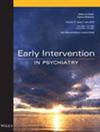Exploring Behavioural Patterns in Youth Predisposed to Bipolar Disorder and the Role of Interpersonal Trauma Using the Adolescent Brain Cognitive Development (ABCD) Dataset
Abstract
Introduction
Bipolar disorder (BD) is a severe, persistent disorder that causes functional impairment. Besides heritability, environmental factors, such as traumatic experience, impact the development of BD. Little is known about the early developmental signs of this disorder; therefore, this study aims to look at the impact of interpersonal trauma on the early developmental signs of BD. Specifically, differences in psychopathological behaviours were investigated between (1) at-risk children and controls and (2) at-risk children who experienced an interpersonal traumatic event and those who did not.
Methods
Using the Adolescent Brain Cognitive Development (ABCD) dataset, participants with a first-degree relative with BD were identified (Nat-risk = 625) and matched on sex and age to a control group (Ncontrol = 625). The Kiddie Schedule for Affective Disorders and Schizophrenia (KSADS) was used to assess interpersonal trauma and psychopathological symptoms. The trauma (Ntrauma = 198) and no-trauma sub-groups (Nno-trauma = 428) were built from the at-risk population. Group comparison was conducted on depressive, manic and anxiety symptoms.
Results
Compared to controls, at-risk children exhibited a significantly greater number of manic symptoms at baseline and 2-year follow-up, and anxiety symptoms at follow-up. No significant differences were found between the trauma and no-trauma groups at either baseline or follow-up.
Discussion
These results confirm the presence of early symptoms in at-risk children, in line with the staging model of BD. Extended longitudinal research is needed to further investigate the potential specific role of trauma on its early behavioural patterns.

 求助内容:
求助内容: 应助结果提醒方式:
应助结果提醒方式:


